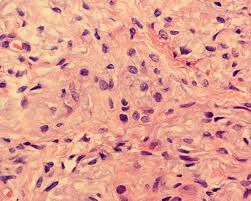Nephrogenic fibrosing dermpathy is known to be a rare medical condition that manifests as swollen and tightened skin. It became evident in kidney patients in year 1997. It is apparently a disease that affects the integumentary system. But there is evidence that nephrogenic systemic fibrosis or the untoward fibrosis of internal organs also occurs.
This condition usually affects those patients that suffer from renal diseases. Nephrogenic fibrosing dermpathy affects people from various ages and walks of life but is more common among those in the middle age group. It occurs anytime during the renal disorder and usually those who undergo renal transplants, peritoneal dialysis, and hemodialysis(formation of AV fistula before this). The disease has also been known to affect patients who had surgery recently or those with problems with clotting factors. Read on and find out some more facts about nephrogenic fibrosing dermpathy:
1. Symptoms
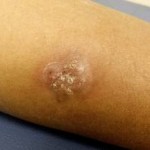 Some symptoms of nephrogenic fibrosing dermpathy are usually found on the extremities especially the wrists, thighs, and upper arms. There are also cases wherein the trunk may also be affected. There are swelling and tightening of your skin from days to a number of weeks; woody, thickened, and indurated skin; subcutaneous nodules; papules (yellow) in the orbital area; shiny surface of the skin; brown discoloration of the skin; reduced range of motion (ROM); development of contractures; and weakness of the muscles. The patient may experience falls or may be dependent on wheel chairs. This can be very detrimental to the patient’s overall health and well-being. Falls may be caused by the restriction of movements.
Some symptoms of nephrogenic fibrosing dermpathy are usually found on the extremities especially the wrists, thighs, and upper arms. There are also cases wherein the trunk may also be affected. There are swelling and tightening of your skin from days to a number of weeks; woody, thickened, and indurated skin; subcutaneous nodules; papules (yellow) in the orbital area; shiny surface of the skin; brown discoloration of the skin; reduced range of motion (ROM); development of contractures; and weakness of the muscles. The patient may experience falls or may be dependent on wheel chairs. This can be very detrimental to the patient’s overall health and well-being. Falls may be caused by the restriction of movements.
2. Causes
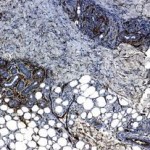 It is still unclear as to what causes nephrogenic fibrosing dermpathy. This may be because of the fact that nephrogenic fibrosing dermpathy is considered a new condition. One known cause of this condition is a circulating fibrocyte (causes scarring) that disperses into the dermal skin layer that transforms to look like dermal fibroblasts. This occurrence is related to the functions of the kidney.
It is still unclear as to what causes nephrogenic fibrosing dermpathy. This may be because of the fact that nephrogenic fibrosing dermpathy is considered a new condition. One known cause of this condition is a circulating fibrocyte (causes scarring) that disperses into the dermal skin layer that transforms to look like dermal fibroblasts. This occurrence is related to the functions of the kidney.
3. Diagnosis
Diagnosis of nephrogenic fibrosing dermpathy is done through skin biopsy and blood tests. It may be similar to osinophilic fascilitis, scleromyxoedema, systemic sclerosis, localized scleroderma, and even dermatofibrosarcoma protuberans. This should be done at the onset of the symptoms so that treatment may be done immediately. Skin biopsy is done by getting a sample of the skin that shows symptoms such as papules and induration. This should be done upon the first consultation. Blood tests should also be done during the first consultation.
4. Treatments
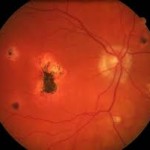 The condition of nephrogenic fibrosing dermpathy is progressive and chronic. To maintain joint function and muscle strength, massage and swimming therapies are given. Evidence of effectiveness are also given to photodynamic therapy, extracorporeal photopheresis, systemic steroids, UVA1/UVB phototherapy, intravenous immunoglobulin, intralesional interferon, pentoxifylline, calcipotriol, sodium thiosulfate, and plasmapheresis.
The condition of nephrogenic fibrosing dermpathy is progressive and chronic. To maintain joint function and muscle strength, massage and swimming therapies are given. Evidence of effectiveness are also given to photodynamic therapy, extracorporeal photopheresis, systemic steroids, UVA1/UVB phototherapy, intravenous immunoglobulin, intralesional interferon, pentoxifylline, calcipotriol, sodium thiosulfate, and plasmapheresis.
5. Prognosis
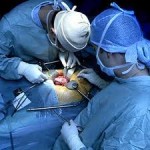 Nephrogenic fibrosing dermpathy is technically rare and new. It is one of the conditions that are still in need of understanding. There are patients who recover gradually. They have improved in their mobility and became more progressive. But because of complications brought about by their kidney transplant or kidney condition, many diagnosed patients die. Only about 5% of them progress at an increased rate. Nephrogenic fibrosing dermpathy tends to contribute to complications, fractures, and restricted mobility that leads to falls.
Nephrogenic fibrosing dermpathy is technically rare and new. It is one of the conditions that are still in need of understanding. There are patients who recover gradually. They have improved in their mobility and became more progressive. But because of complications brought about by their kidney transplant or kidney condition, many diagnosed patients die. Only about 5% of them progress at an increased rate. Nephrogenic fibrosing dermpathy tends to contribute to complications, fractures, and restricted mobility that leads to falls.
Even if nephrogenic fibrosing dermpathy is still a new condition, you should be aware of the signs and symptoms especially when you know that you are diagnosed with a kidney disease. The correct diagnosis should be done at the first consultation so that the treatment may be done at the soonest. If this is done, then recovery may happen much sooner. It is really important for you to undergo treatment very early so that it would not be aggravated and debilitate you more. Even with all these treatments, make sure that you follow a change in diet and lifestyle. Recovery from nephrogenic fibrosing dermpathy is possible. Just remember that it is really up to your vigilance and persistence in getting rid of this secondary disease. Take your medications on time, with the right dosages. Get rid of all vices such as drinking alcoholic beverages, smoking, and taking prohibited drugs. A diet with less sodium and sugar and more on fruits and vegetables would contribute more to your recovery. Also avoid junk foods and excessively sweet food items. Cooperate and coordinate with your doctor so that every step may be well-monitored and evaluated. Only then would your prognosis be increased. Continue to do valuable research on nephrogenic fibrosing dermpathy so that you may be further updated on the latest developments about the condition.
